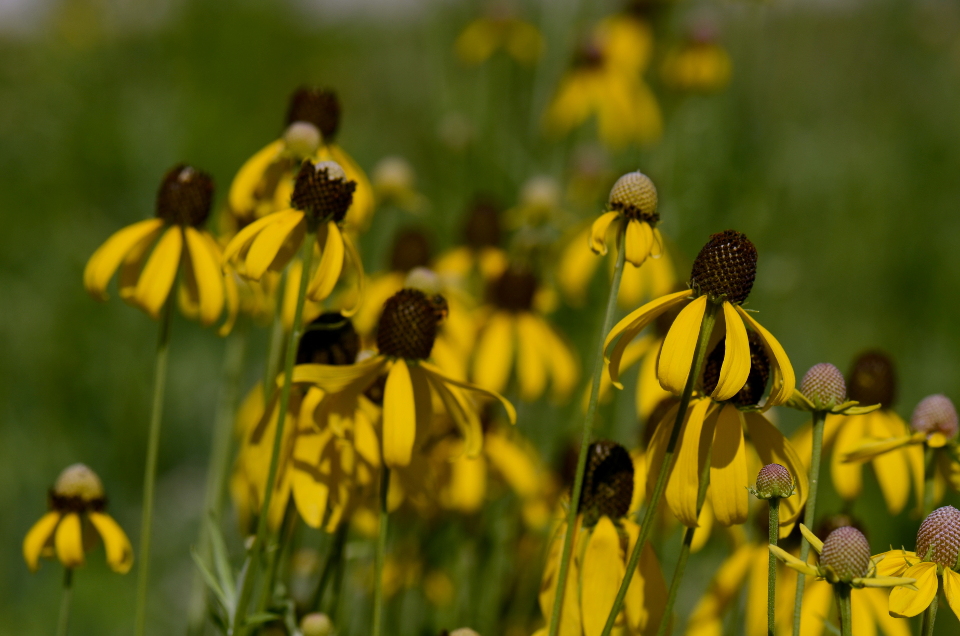Commonly Used Species
FORBS:
Black-Eyed Susan (Rudbeckia hirta) - Forb, Full/Partial Sun, Dry to Wet Mesic, Blooms June-October.
A common wildflower is a great beginner plant for native gardens because they work
as a cover crop and then get out competed as other species get established.
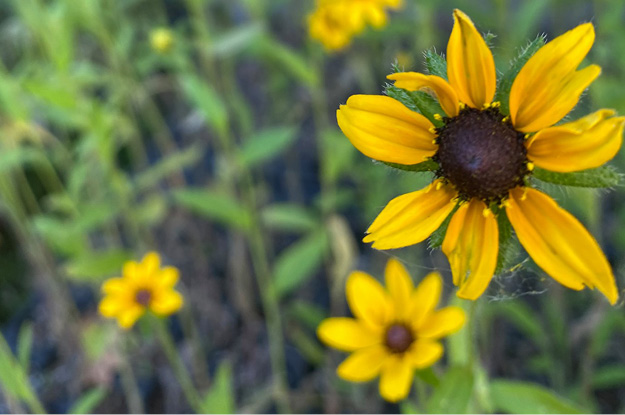
Blue Cardinal Flower - aka Great Blue Lobelia (Lobelia siphilitica) - Forb, full/partial sun, Wet Mesic to Wet, Blooms July-September.
Herbaceous perennial that may grow 3 to 4 feet tall. The leaves are alternate with a toothed margin. Blue flowers first mature in mid-summer and continue into early fall. The flowers are larger than other Lobelias and have stripes on the tube portion.
This plant provides late summer bloom to the perennial border, wild garden, native plant garden, woodland garden, or naturalized planting. It is also effective near ponds or streams.

Blue Verbain (Verbena hastata) - Forb, full/partial sun/shade, Moist to Wet, Blooms June-September.
Simpler’s-joy or blue verbena is a 2-5 ft., stout-stemmed perennial with numerous, pencil-like flower spikes branched upwards like the arms of a candelabra. Each flower spike has a ring of blue-purple flowers; the flowers at the bottom of the spike bloom first, and the ring of flowers appears to advance upward to the tips of the spike. Stiff, pencil-like spikes of numerous small, tubular, blue-violet flowers are at the top of a square, grooved stem and its branches.An attractive perennial, it has flowers on showy candelabra-like spikes. Bumblebees are among the important pollinators. In ancient times the plant was thought to be a cure-all among medicinal plants and the genus name is Latin for "sacred plant."
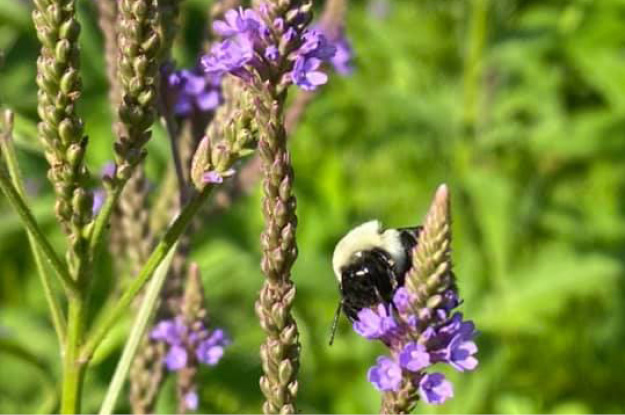
Butterfly Milkweed (Asclepias tuberosa) - Forb, Sun, Dry Mesic, Blooms May-September.
This bushy, 1 1/2-2 ft. perennial is prized for its large, flat-topped clusters of bright-orange flowers. The leaves are mostly alternate, 1 1/2-2 1/4 inches long, pointed, and smooth on the edge. The yellow-orange to bright orange flower clusters, 2-5 inches across, are at the top of the flowering stem. The abundance of stiff, lance-shaped foliage provides a dark-green backdrop for the showy flower heads.
Its brilliant flowers attract butterflies. Because its tough root was chewed by the Indians as a cure for pleurisy and other pulmonary ailments, Butterfly Weed was given its other common name, Pleurisy Root. Although it is sometimes called Orange Milkweed, this species has no milky sap.
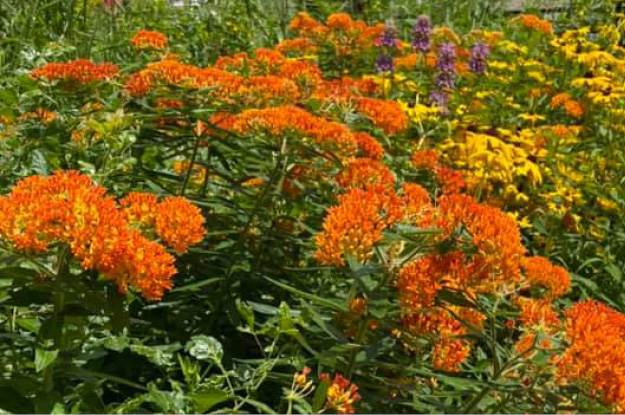
Columbine (Aquilegia canadensis) - Forb, partial shade to full sun, Mesic, Blooms May-July.
Wild Red Columbine typically appears in late spring and grows well in areas of lower light (at least 4 hours of sunlight a day). Can grow as tall as 30 inches and works well in garden beds and when planted at woodland edges.
Wild Red Columbine is a perennial species that prefers well drained soils and is pollinated
by hummingbirds. This native wildflower is a welcome sign that spring is here!

Common Milkweed (Asclepias sryiaca) - Forb, full/partial sun, Dry to Medium, Blooms June-August.
Common milkweed grows to four to five feet in height and has large pink, white and green flowers. The extremely fragrant blooms attract and benefit many pollinators. This milkweed species can be found growing in almost any type of open, undisturbed habitat throughout the state of Ohio (and much of the United States), including meadows, roadsides and riverbanks.Though some gardeners consider common milkweed an aggressive weed, it is an important food source for monarch butterflies and is an important part of Ohio’s ecosystem.
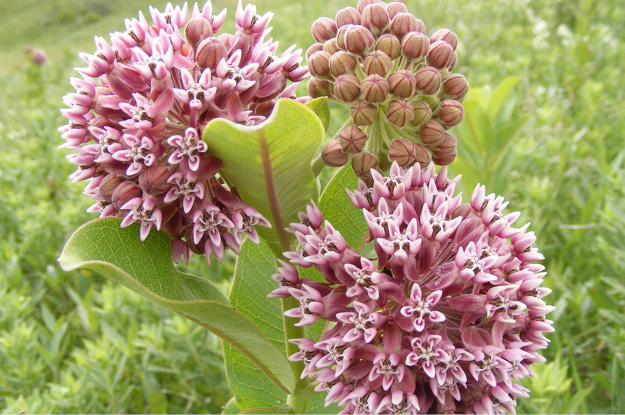
Culver's Root (Veronicastrum virginicum) - Forb, full/partial sun, Medium to Medium-Wet, Blooms June-August.
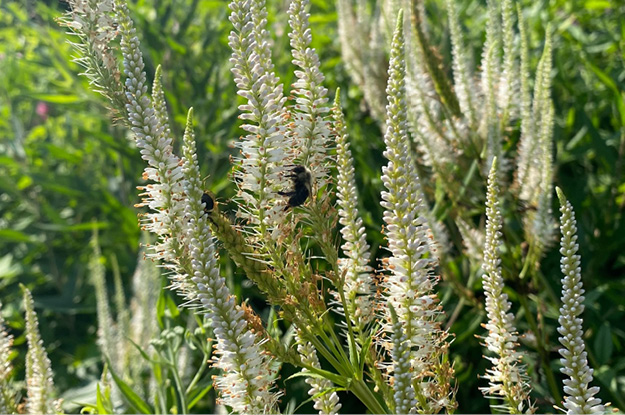
Dense Blazing Star (Liatris spicata) - Forb, full/partial sun, Mesic to Wet, blooms July through September, attracts pollinators. Also known as Marsh Blazing Star.
Dense Blazing-star forms a wand of purple flower heads that thrive in wet soils including rich garden soil and rain gardens.

Dotted Horsemint (Monarda punctata) - Forb, full sun, Dry, blooms April-August.
An aromatic, erect perennial ranging from only 6 in. to almost 3 ft. tall. Rosettes of yellowish, purple-spotted, tubular flowers occur in whorls, forming a dense, elongated spike at the end of the stem or from leaf axils. Each whorl is subtended by large, conspicuous, whitish, purple-tinged, leaf-like bracts.

Flat Top Aster (Doellingeria umbellata) - Forb, full/partial sun, Mesic to Wet, blooms July-September, aggressive in landscaping, rhizomatous.
Flat Top Asters are an early bloomer, with white colored petals and yellow centers. As the plant matures, the colors dull to a tan to red shade. Flat Top Aster is a favorite of many insect pollinators while larger animals like turkey and deer enjoy the foliage.

Gray Goldenrod (Solidago nemoralis) - Forb, Full/Partial Sun, Dry to Dry Mesic, Blooms August-October.
Also known as Old Field Goldenrod, Grey Goldenrod is a good plant for beginning gardens in poor soil because it is capable of growing anywhere, but prefers well-drained soils.

Grey Headed Coneflower (Ratibida pinnata) - Forb, Full/partial sun, Mesic-Dry Mesic, attracts pollinators and good for landscaping. Also known as Yellow Coneflower.
The Grey Headed Coneflower has large yellow petals hanging below the oval cones that turn gray and disintegrate through the winter months. Although Gray-headed coneflowers struggle to compete with dense native grasses, in well drained soil it can quickly fill in a plot, especially when the plantings are disturbed.
Nodding Onion (Allium cernuum) - Forb, Full/Partial Sun, Dry Mesic - Wet Mesic, Blooms July-August. Nodding onion, is an aggressive low-growing plant that competes well with dense prairie grasses on moist soils.
The bulb head is edible and can be used as an onion substitute, while the pink flowers bloom early in wet woodland areas where fewer plants flower.
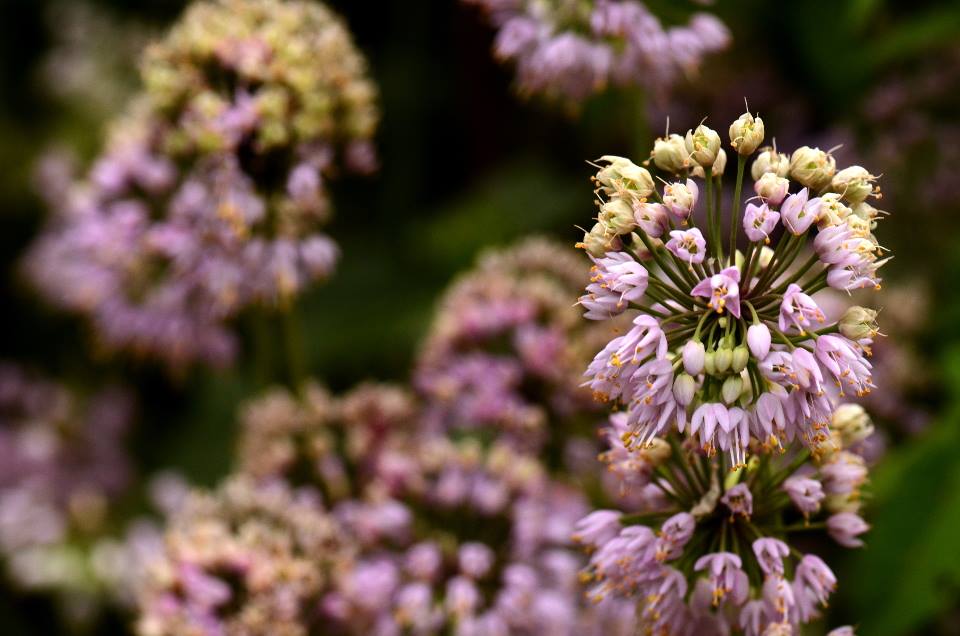
Prairie Dock (Silphium terebinthinaceum) - Forb, full/partial sun, Mesic to Wet, blooms July-September, attracts pollinators
Prairie Dock has large green leaves with short hairs that keep cool air against the leaves. The large leaves also provide shade for the flower stem that grows taller than the leaves. The bloom stalk, although leafless itself, produces bright yellow rayed flowers.
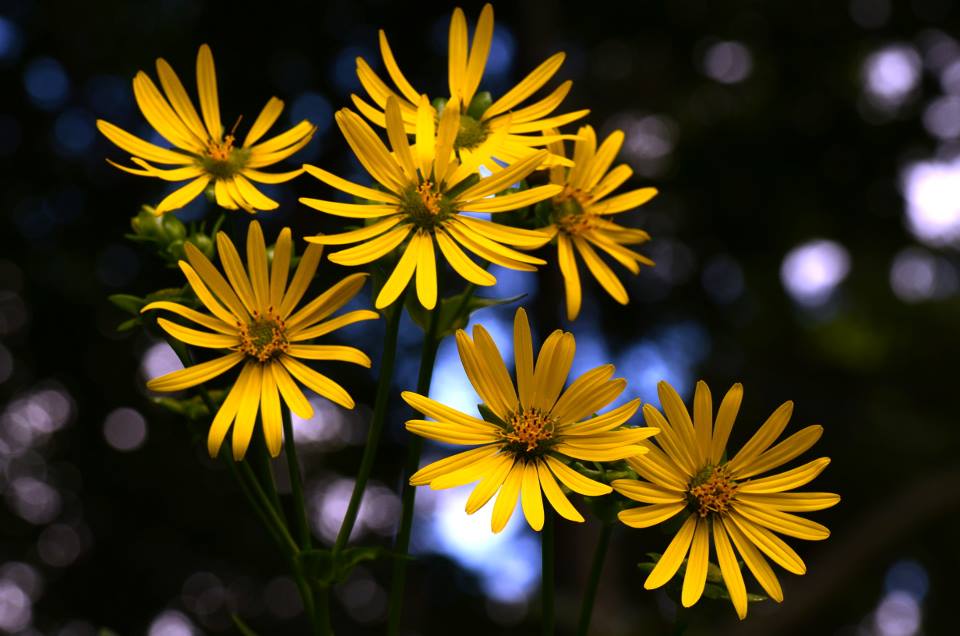
Rattlesnake Master (Eryngium yuccifolium) - Forb, Full Sun, Dry Mesic to Wet Mesic, Blooms July-September. Also known as Button Snakeroot, Yucca-leaf Eryngo, Corn Snakeroot, Water-eryngo, Rattlesnake Flag, and Rattlesnake Weed.
This small, clustered white domed flower is a favorite of insect pollinators, both bees and butterflies.
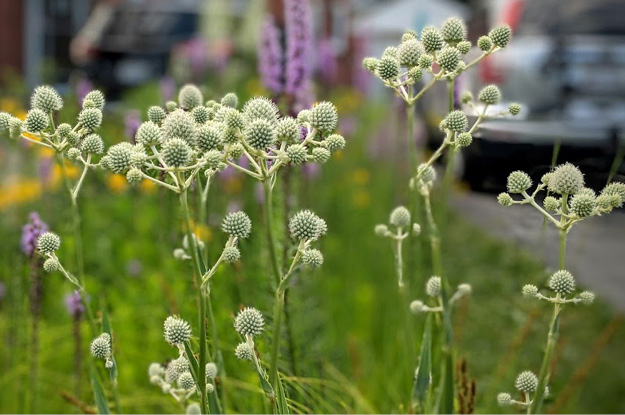
Red Cardinal Flower (Lobelia cardinalis) - Forb, full/partial sun, Wet Mesic to Wet, Blooms July-September.
The bright red Cardinal flower is a favorite of Ruby-throated hummingbirds, the primary pollinator, which makes this a perfect plant for hummingbird gardens. Cardinal flower’s ability to grow in wet soils, makes it a favorite for rain gardens. The short blooming season occurs in the fall during hummingbird migration season.

Spiderwort (Tradescantia ohiensis) - Forb, Full/partial sun, Dry to Wet Mesic, Blooms May-July.
A favorite on sunny mornings, the Spiderworts’ purple blooms are fantastic to look at but not touch as a closed bloom can stain clothing. The pollen is collected by pollinators but there is no nectar for them to eat.
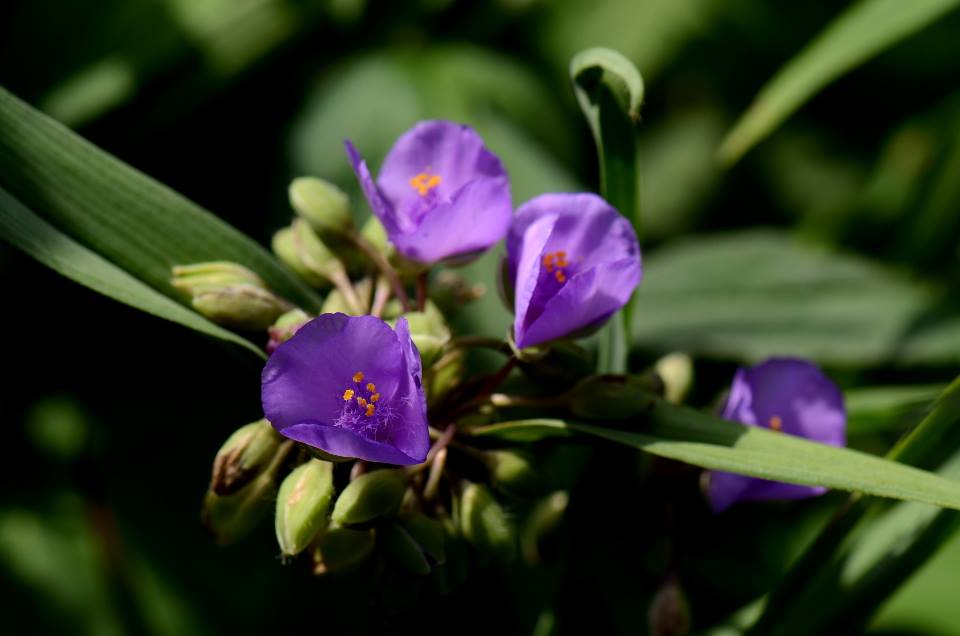
Stiff Goldenrod (Oligoneuron rigidum) - Forb, full/Partial Sun, Dry to Wet, Blooms August-October.
A favored of pollinators, stiff goldenrods can grow in any soil regardless of the quality, and still provide food for insect pollinators and songbirds. The yellow colors last through fall and then turns to shades of orange and red.

Virginia Mountain Mint (Pycnanthemum virginianum) - Forb, Full/partial sun, Dry Mesic to Wet, Blooms June-September.
A favorite of insect pollinators makes the Virgina Mountain Mint a great flower for any garden.

GRASSES/SEDGES:
Bottlebrush Grass (Elymus hystrix) - Grass, Partial Sun-Partial Shade, Medium Dry to Wet, Blooms September-October.
Bottlebrush Grass grows in dry, woody areas but grows in almost any soil condition in cultivation. These tall, narrow plants, clump together and provide late season color and interest.

Indian Grass (Sorghastrum nutans) - Grass, Full/Partial Sun, Dry to Wet Mesic, Blooms August-September.
Although a hard grass to control for landscape planting, Indian Grass is a great grass to grow for warm colors in the fall among prairie plantings.
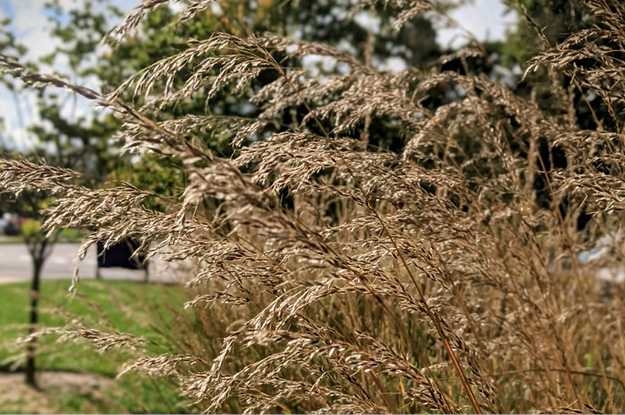
Little Bluestem (Schizachyrium scoparium) - Grass, Full/Partial Sun, Dry to Mesic, Blooms July-October.
Little Bluestem can grow in any well-drained soil with full sun and self-sows, which makes it a good plant for landscape gardening. This grass, along with many other grasses, turns golden shades in the fall, and Little Bluestem can hold its gold colors well into the winter season.
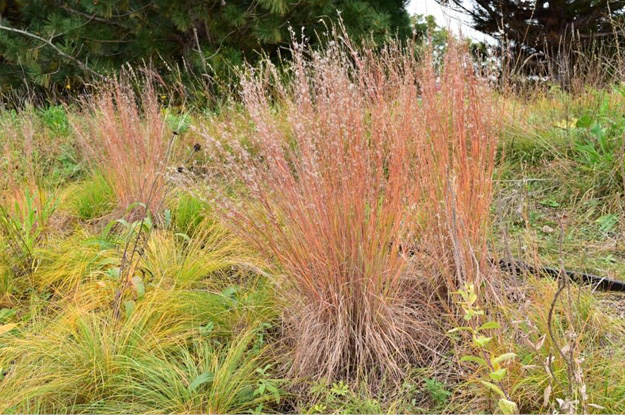
Switchgrass (Panicum virgatum) - Grass, Full/Partial Sun, Dry to Wet Mesic, Blooms July-August
Switchgrass can grow almost anywhere with full but can become aggressive in cultivation.
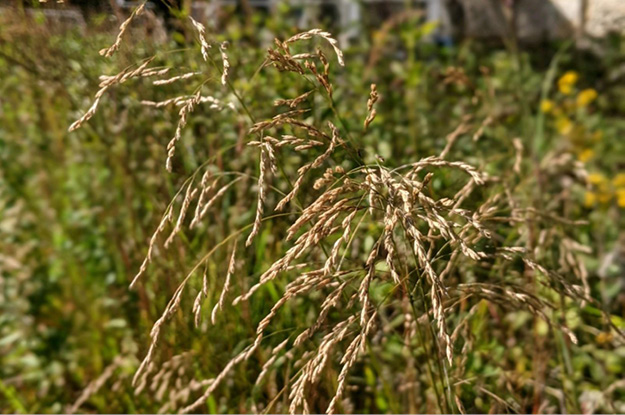
SHRUBs:
Shrubby St John’s Wort (Hypericum prolificum) - Shrub, Full/Partial Sun, Mesic to Wet Mesic, Blooms in June-August.
A favorite of pollinators, bees, caterpillars and a dislike of deer and rabbits, Shrubby St John’s Wort is a plant that can grow almost anywhere and can be pruned to different shapes, making it a favorite in landscaped gardens.




